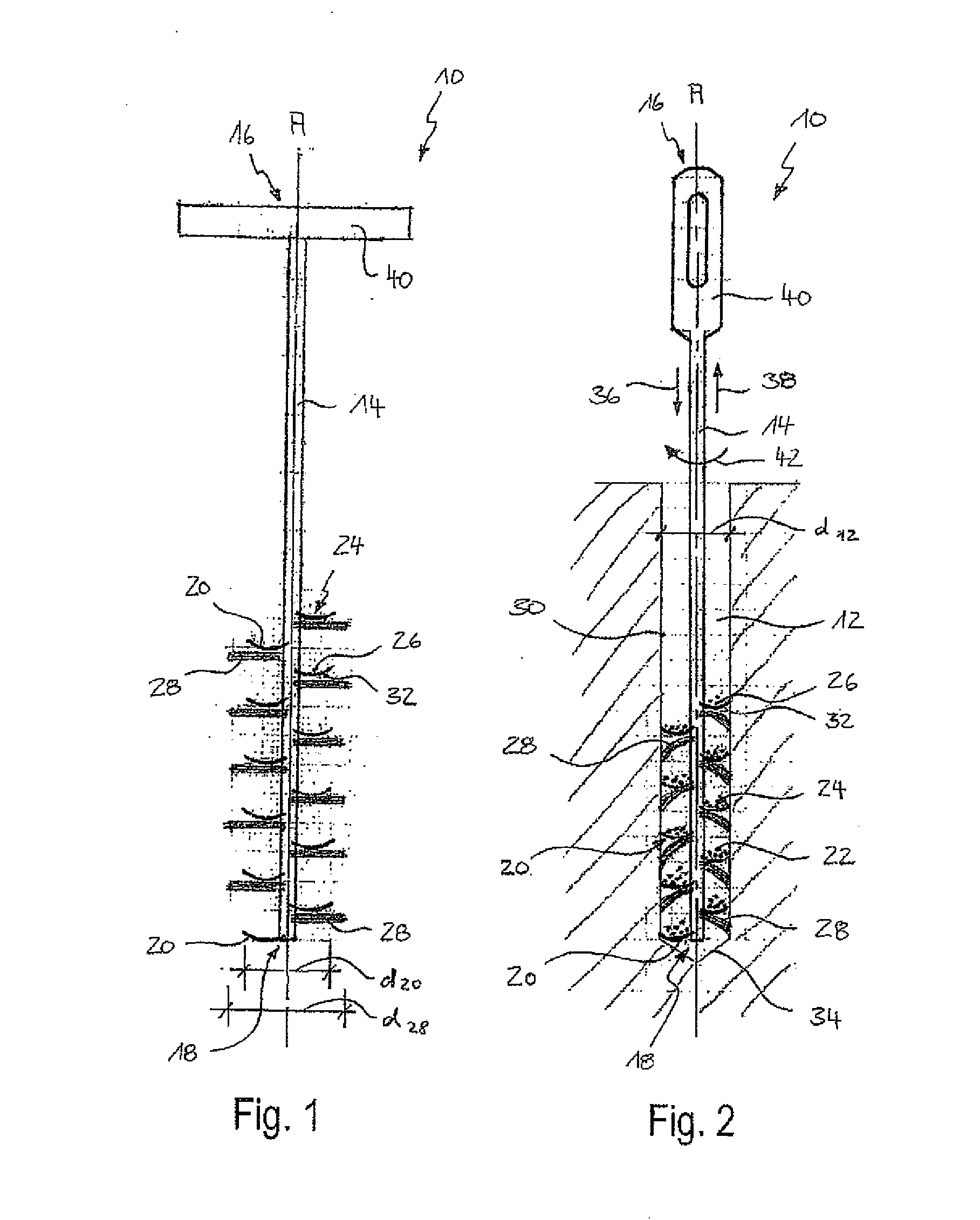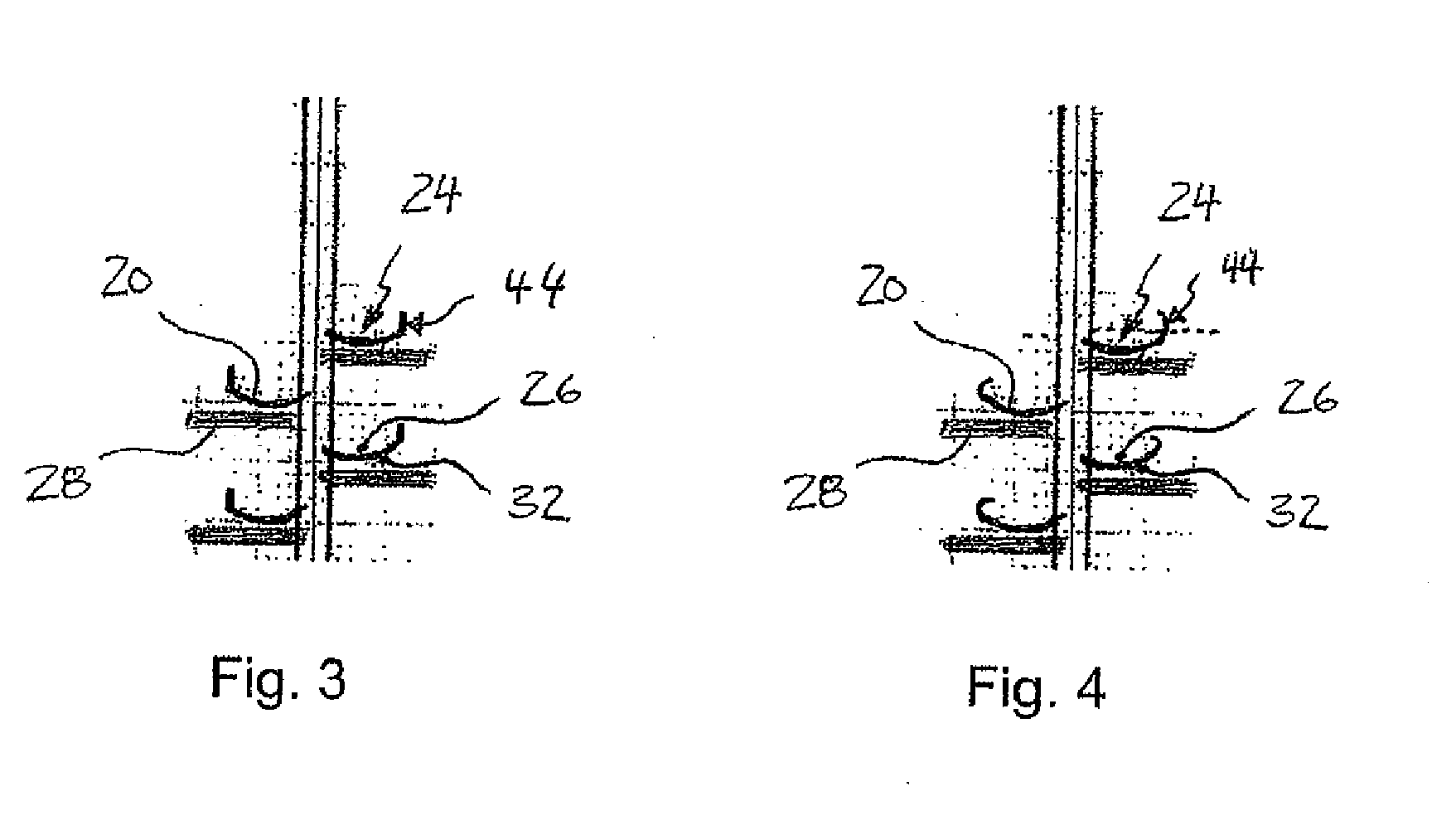Tool and method for cleaning a drilled hole
a drilling hole and drilling technology, applied in the direction of cleaning hollow objects, brushes, applications, etc., can solve the problems of complete removal of drilling dust, and achieve the effect of simple and quick cleaning procedure, no dust generation, and extensive equipmen
- Summary
- Abstract
- Description
- Claims
- Application Information
AI Technical Summary
Benefits of technology
Problems solved by technology
Method used
Image
Examples
first embodiment
[0034]FIG. 1 shows a tool 10 for cleaning a drilled hole 12 (see FIG. 2), with a tool shank 14 that, relative to a shank axis A, has an axial attachment end 16 and an opposite axial cleaning end 18, as well as at least one conveying element 20 for removing drilling dust 22 (and drillings) from the drilled hole 12, said conveying element 20 being attached to the tool shank 14 and arranged in the axial direction like a helix around the tool shank 14 and being configured as a channel 24 that is open in the direction of the attachment end 16.
[0035]The conveying element 20 can be a conveyor belt with a continuous dust-impermeable transport surface 26, whereby a lengthwise edge of the helical conveying element 20 is adjacent to the tool shank 14, and it is preferably in contact with the tool shank 14 or engages with the tool shank 14. Furthermore, the lengthwise edge of the conveying element 20 is joined to the tool shank 14, at least in sections, for example, welded, glued, screwed or he...
second embodiment
[0042]FIG. 2 shows the tool 10 whereby the cleaning end 18 of the tool shank 14 have already been inserted axially into the drilled hole 12 (arrow 36), and, in the snapshot shown in FIG. 2, it is being pulled back out of the drilled hole 12 in the opposite axial direction (arrow 38).
[0043]The second embodiment of the tool 10 as shown in FIG. 2 is identical to the first embodiment of the tool 10 as shown in FIG. 1, except for an actuation device 40 on the attachment end 16 of the tool shank 14.
[0044]Whereas a handle for manually actuating the tool 10 is provided in FIG. 1, the actuation device 40 as shown in FIG. 2 is formed by a defined positive fit contour that, for example, can fit positively into the socket of a power drill or that can fit non-positively into the socket of an electric-powered screwdriver, in order to mechanically actuate the tool 10.
[0045]First of all, the drilled hole 12 is made with a prescribed hole diameter d12, whereby this hole diameter d12 is smaller than...
PUM
 Login to View More
Login to View More Abstract
Description
Claims
Application Information
 Login to View More
Login to View More - R&D
- Intellectual Property
- Life Sciences
- Materials
- Tech Scout
- Unparalleled Data Quality
- Higher Quality Content
- 60% Fewer Hallucinations
Browse by: Latest US Patents, China's latest patents, Technical Efficacy Thesaurus, Application Domain, Technology Topic, Popular Technical Reports.
© 2025 PatSnap. All rights reserved.Legal|Privacy policy|Modern Slavery Act Transparency Statement|Sitemap|About US| Contact US: help@patsnap.com



